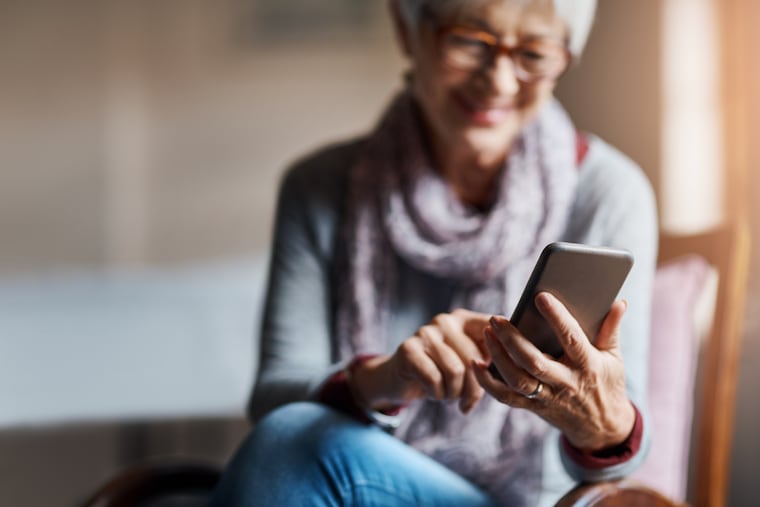During the pandemic, text messaging has become a life-saving health-care service | Opinion
Texting allows greater access to people of different ages and incomes than other forms of virtual communication that require greater skill and more expensive broadband internet access.

As a primary-care physician, ER physician and medical student, we constantly combine hands-on care with digital technology to care for our patients. Now, the same technology we use to ping messages to each other has itself become an important clinical tool.
For instance, when one of our 81-year-old primary-care patients with congestive heart failure developed COVID-19, everyone feared the worst for her. Although she is very independent and vital, her older age and chronic disease made her especially vulnerable to severe COVID illness or even death. She also lived alone, with no family in the immediate area to check on her. But she did have a cell phone and, thankfully, she was comfortable with text messaging.
She was advised to enroll in a program to closely monitor her status at home. The program, COVID Watch, uses text messaging to check in with patients who are at risk of complications from COVID-19. A worrisome response to a text message — say, that a cough or shortness of breath has begun — triggers a health-care provider to reach out with a phone call. This patient agreed to enroll, and confessed that she never imagined that texting would qualify her for a potentially life-saving health-care service.
The vast majority of American adults own a mobile phone capable of text messaging which, as it turns out, is the device’s most widely used feature. Our elderly patient used text messaging frequently and with ease to communicate with family and friends. Many people assume that older people don’t text, yet data from the AARP show that people over age 60 make up a significant portion of the 96% of Americans who own a mobile phone capable of text messaging, and texting continues to increase in those over age 70.
COVID Watch is a perfect example of how this technology has been a potential lifeline during the pandemic. Another example of a text message-based clinical support service is Heart Safe Motherhood, a program that provides new mothers with a blood-pressure cuff before they leave the hospital. After returning home, patients receive text reminders twice daily for two weeks to check their blood pressure. Reported high readings could be a warning sign of post partum complications, which nurses can respond to before they become crises.
Limits on in-person clinician visits during the pandemic have accelerated creativity and progress in many types of virtual communication, including video (telemedicine) visits and monitoring by wearable devices, of which text messaging is among the easiest to use. Texting does not require WiFi or comfort searching the internet. Font size can be adjusted for those who are visually impaired, and voice commands through digital assistants such as Siri can be used if vision or finger dexterity are limitations.
These features allow greater access to people of different ages and incomes than other forms of virtual communication that require greater skill and more expensive broadband internet access. Although not a substitute for telemedicine, text messaging may help bridge the digital divide in providing virtual care.
Our patient was fortunate to recover without requiring emergency or hospital care, and she said that COVID Watch provided much needed reassurance. The texting program also provides her care team comfort, knowing she has a “second set of eyes” watching over her. Opportunities to improve health through the use of text messaging will continue to multiply and improve.
If you are a texting holdout and think that a phone should simply be for phone calls, we hope that concern for your health will inspire you to reconsider your decision.
Jeffrey Millstein is a primary-care physician and regional medical director for New Jersey and Bucks County practices of Penn Primary Care. Anish K. Agarwal is an assistant professor in the department of emergency medicine at the University of Pennsylvania’s Perelman School of Medicine. Lillian Sun is a second-year medical student at the Perelman School of Medicine.